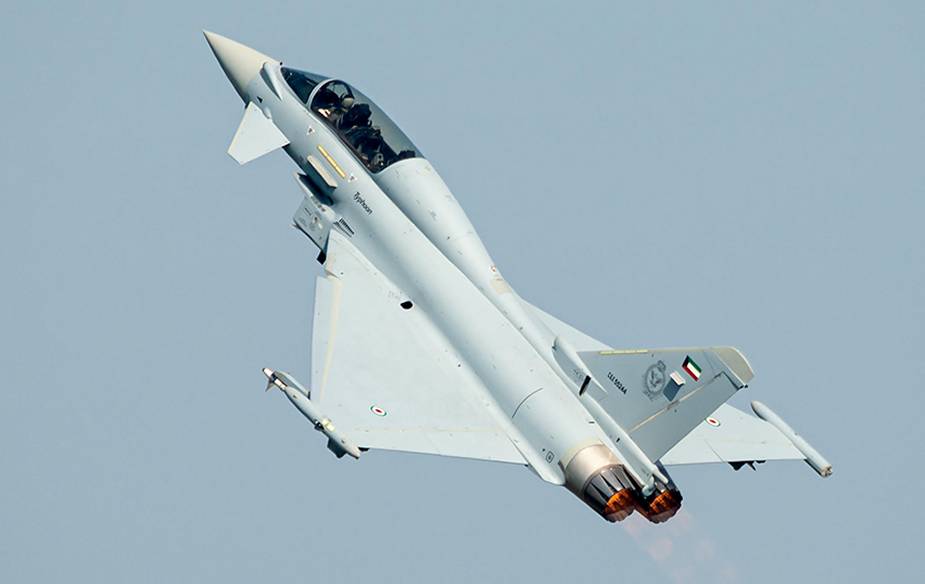As reported by ADS, the first Eurofighter Typhoon II fighters built according to the specific requirements of the Kuwait Air Force landed in the country on December 14. A total of 28 aircraft has been ordered.
Follow Air Recognition on Google News at this link

One of the two Eurofighter Typhoons destined to Kuwait during taxi on Oct. 15, 2021. (Picture source: Alessandro Maggia)
The Eurofighter Typhoon has been designed to be a supremely effective dogfighter in combat. Later production aircraft have been increasingly better equipped to undertake air-to-surface strike missions and to be compatible with an increasing number of different armaments and equipment, including Storm Shadow and Brimstone missiles. The Typhoon had its combat debut during the 2011 military intervention in Libya with the Royal Air Force (RAF) and the Italian Air Force, performing aerial reconnaissance and ground strike missions. The type has also taken primary responsibility for air-defence duties for the majority of customer nations.
In addition to the four partner countries, which have already ordered 510 Typhoons, international customers now include Saudi Arabia (72 aircraft), Austria (15), Oman (12), Kuwait (28) and Qatar (24), a total of 661 ordered planes.
Leonardo represents about 36% of the value of the entire programme, with its key role in the aeronautical components and the onboard electronics, including the new AESA (Active Electronically Scanned Array) radar that equips the Eurofighter Typhoons for Kuwait, which increases the aircraft's performance and competitiveness. At the delivery ceremony of the first two Typhoons to the Kuwaiti Air Force, Alessandro Profumo, Chief Executive Officer of Leonardo, said: “The Eurofighter Typhoons we have developed and produced for the Kuwait Air Force are the most advanced in the whole history of the European programme. We will provide the country with an impressive air defence capability. In cooperation with the Italian Air Force we trained their pilots in our training centres in Italy, we built state-of-the-art infrastructures to support and maintain a fleet of 28 aircraft. The milestones we are celebrating today is the result of the effective cooperation between the two countries, where Institutions, Armed Forces and Industry have worked together in synergy.”
















